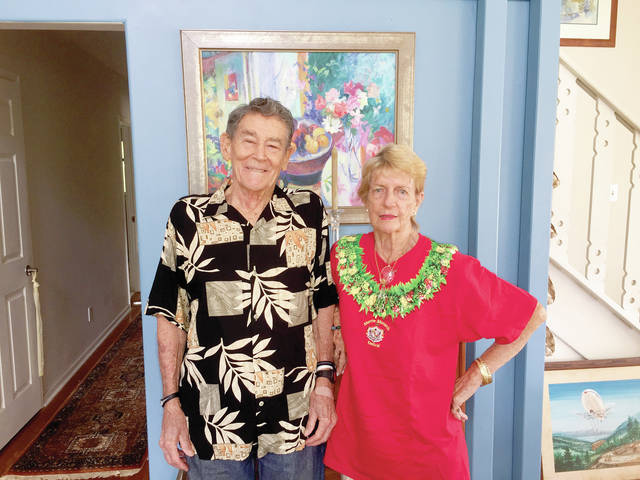Hank Soboleski’s column in The Garden Island (Sept. 30) sparked a flame in me, of recalling much during the early days of World War II. I always go straight to the Sunday TGI’s “Lifestyle” section to see what Hank’s latest story is to read.
I was lucky enough to be a Waimea Boy Scout when World War II started. We Scouts joined forces with the Kauai Volunteers, along with some from the National Guard. Our job was to act as the “bad guys” (enemy) while practicing battle maneuvers in the Kokee mountains.
We well-remember Harwood Danford, our star of the west Kauai KVs. And I well-recall prewar tennis matches in our side yard at our manager’s home. I was a ball chaser, and watched superstar Harwood close-up. When the war started, there were still some tennis matches, but the KVs were called to duty and we all then supported the 27th Infantry Division in mock battles.
There were very few ways to send messages to the Kokee headquarters about the battle progress. I had a rack on the back of my horse (we almost all had horses) that carried four carrier pigeons. A pigeon would be launched with a message at certain stages of the “battle.”
In the middle of one part of the battle, a bunch of wild pigs came out of the brush. Those KVs that were pig hunters quit the war game and chased the pigs. We had kalua pig back at manager’s home.
We got to know some of the GIs in the 27th Division. They practiced mock landings on the beach in front of our manager’s home. After landing their LCI Craft on the beach, they would blow up the heavy barbed wire that covered our beach.
Unfortunately, their Waimea practice failed on Betio Island, Tarawa, when they misjudged the tide and wound up stranded on the reef. They were sitting ducks while the Japanese artillery blew them apart. And we knew so many of them personally, that had been with us (the KVs, National Guard and Boy Scouts) up Kokee.
As an aside, Dec. 7 was a day for us on Kauai when our many fathers who were sugar plantation managers awaited the Inter-Island Airways Sikorsky S-43 airliner. Dec. 8 was to be the annual meeting of all sugar plantation managers in the territory, in Honolulu. Obviously, we never saw an airplane and the managers missed the Hawaii Sugar Planters Association meeting and went home to cover windows and guard beaches.
The airport was Port Allen Burns Field, and while everyone stood around waiting on the tarmac, Ambrose Smith was listening to the radio in Uncle Lindsay Fayés banana wagon. Ambrose started to shout for us to come hear KGU. Webley Edwards had announced that the “maneuvers” he watched became the real McCoy when he watched a green Japanese Zero drop a bomb next to his studio. The next big scare for all of us were the days preceding and including the “Battle of Midway.” Lucky we won.
•••
Alan Fayé is a resident of
Princeville.


